Omlet meets: Jeremy, engineer turned chicken enthusiast
One of the pioneers of the Omlet Ambassador Program, Jeremy discovered an unexpected synergy with his professional expertise on his chicken keeping journey. A Florida based building design engineer, we first connected with Jeremy when Omlet Co Founder James was traveling around America meeting customers. James found Jeremy data logging the Eglu Cube’s internal environment. Unsurprisingly, they hit it off.
So, Jeremy, tell me how you first got into chicken keeping?
Well, initially, it was my wife and son who wanted to keep chickens. I grew up with a farm behind me, and to my mind it sounded like a lot of work – and I already have enough of that! But I wasn’t set against it; I agreed and we started to look at options.
You know, everything I saw was garbage, just overpriced for what it was. For starters, wood just does not do well in our environment. The humidity will claim it straight back. And I could see that these coops were flimsy: they just weren’t going to stand up to predators. But we had already got these chicks and we were racing against time.
I finally came across an image of the Eglu Cube online. I began to do the research, to look into it. Back then, there was no Ambassador Program like there is now, so I had to go on what I could see online and to me, the design just looked like it would work. So we bought it, because I thought it would work.
And it did?
Well, I’ll tell you a story. I became more involved with Omlet after Hurricane Ian. Because we were hit. My entire backyard was destroyed. There were trees everywhere, fences gone. And I came out once it had passed, and there was this coop, just sitting there in the middle of it all. So, when you talk about the cost, about the investment, that to me is a big part of it.
Of course, not every coop will have to deal with a hurricane. This thing took down 40 ft trees – it was as big as I’ve ever seen. It’s hard to communicate what that looks like and feels like. It was astonishing. So I took a picture of the wreckage with my Eglu Cube in the middle and I sent it to Omlet Customer Experience just to let them know, hey, my coop is still here, even though nothing else is!
Is that how you became an ambassador?
Look, if someone is going to invest, it’s great to be able to come and see it for real. So that’s why I think the Ambassador Program is so important. Because you can really communicate that value. It might be hard to understand that just by looking at it online. Right now, a lot more people are keeping chickens. There was the egg shortage during Covid, among other factors. Local interest is climbing, and for a first time customer, visiting an ambassador like me can really be a link with Omlet, a tangible connection, and I think that’s important with a big purchase.
So… hang on… you’ve gone from going along with getting chickens because it was what the family wanted – to being an Omlet Ambassador?
Yep. I came into this indifferent – I was going to be a bystander. I went from “Sure, OK, whatever you want to do,” to where we are today: I’m an Omlet Ambassador, and we currently have two Eglu Cubes, a Walk In Run, now an Eglu Pro – and we’re expanding our flock. I call it the chicken campus.
Sounds like a classic case of chicken math!
We started with three, an Ameraucana and two Easter Eggers. We were very selective and got them on a local farm. It was for animal welfare of course but also the human side – the hygiene factor of raising chickens is of utmost importance. So we found a farm that we were really impressed with.
Then, we got three Rhode Island Red refugees from another keeper nearby, whose setup was destroyed by the hurricane. They’ve since got another wooden coop, and within a couple of years, it’s already falling apart. We’re actually going to give them our original Eglu Cube now we have the Eglu Pro, because we don’t need three coops, even with our new arrivals, we have plenty of space.
So, we have the new chicks coming from a hatchery in five weeks. We tried very very hard to find someone locally, but it was tough. I couldn’t find anyone this time around that I was happy with. I looked carefully and chose a hatchery with a good reputation. It sounded strange to me at first, the idea of buying chicks in the post, but now I understand it, I understand it is fine. And there was quite a demand – we had to get in line! We have a Blue Copper Maran, a Wheaten Maran, a Blue-Laced Red Wyandotte and a Buff Brahma. My wife chose – she’s the one who cares what breeds we get. For me, we just need to look at ones which are hardy. So we will have 10 when they arrive. We may go to eleven or 12, we’ll see. I felt like with the Eglu Cube, six was comfortable, but that is because our Rhode Island Reds are big.
Do they have names?
With the first three, we each named one. I named the matriarch, Chicken Nugget. Because she looked like a nugget when she first hatched. Then there’s Fluffy, our second in command, the queen of broodiness, she has like four/five/six broody cycles a year. But she’s the sweetest too. Then Lila is third in command. She is the feistiest of them all – she’s the one that keeps the separation with the newer three – who all look pretty much identical. One of them’s called Runner, for obvious reasons. And actually she’s more strawberry blond since the moult. The other two, I’d have to ask my son. Only he can tell them apart. They are very much household pets, which is another reason why I would always recommend Omlet coops, for the security they provide.
Yes, indeed, the predator problem…
We’ve experienced it with the Eglu Cube and now already with the Eglu Pro, we come out and we see scratch marks around where predators have tried and tried to get in the coop overnight. Here in Florida, we have racoons, coyotes, bobcats. We’re in an area right along the coast, and there are predators everywhere. Where we are is a hotspot of development. Everyone is moving here, and the effect on these predators is that it condenses them. They’re more brazen, more desperate, which makes the chickens subject to some really determined attacks.
I saw a bobcat get a rabbit when I was taking a walk one night. It moved with total silence. I didn’t know it was there until it grabbed the rabbit and then it was gone. Coyotes aren’t scared any more. The coop will be literally covered in muddy pawprints in the morning. So keeping the flock safe is a huge piece of the puzzle. Most other coops I see, well, I couldn’t see them stopping a determined raccoon.
Then you have aerial attacks, which is probably an even bigger threat. I went out one morning, and I couldn’t hear them. Not a sound, and I thought, why aren’t they making any noise? Then I saw them, and they were all standing there, completely silent. I looked up, and there were seven hawks in the tree above their run, just looking down at them. The chickens were frozen. So, yes, it would be lovely to let them roam completely free – but not for long. The predator proofing that you get with an Eglu, that is invaluable. I talk about layers of security. An Omlet coop has layers of security. Because a determined predator will keep coming back. The evidence is there that they’re trying, but they don’t succeed. They can’t defeat it – and when you consider your chickens as pets, you try to protect them as such.
Yes, it means a lot to know they’re safe.
It’s not just predators – there’s the climate too. The coop is insulated and it’s great for the elements – but you still have to pick a spot with shade. It’s important to think about the local climate, and that’s where the Ambassador Program is helpful. Florida is basically a swamp. So a wooden coop just is not going to stand up. Then, because we’re in a hurricane zone, we can’t have any fixed structures. So both the Eglu Cube and the Eglu Pro comply with that. We can move it. We don’t – but we could. Local experience with chicken keeping helps.
So these are the kind of conversations we’ll have when people come to see our setup, which might begin by talking about a product, but are more the lifestyle. For example, the unsung hero of Omlet inventions is the Autodoor. I don’t mind telling you I laughed at first – I don’t know how I got talked into buying it. Well, it’s a game changer, truly. Unless you want to be up at the crack of dawn, every day, and be there to put them away every evening, you NEED this door. And when you go away, having the Autodoor means you can ask your neighbours to watch the chickens. Because it’s no big deal. It’s extremely reliable too. So, when someone is starting out, they might think, “Oh I don’t need that, I don’t want to spend that extra money,” but actually you need to hear it from someone who knows, who has been doing this for a while.
So to go back to your earlier question – that’s why I became an ambassador I guess. I do it because I want to be the resource for people that I would have wanted, when I started out.
It sounds like it’s been quite a journey – when did it really get under your skin?
I remember, we had the first chicks and I was racing against time because it took longer than I thought it would to find the right coop, and then I was building and assembling it, and by then they were roaming around me. They just walked around me and right from the start, they endeared themselves to me, because just by being with them and being around them, you realize they each have their own personality. They’re very soothing and comforting – they’re therapeutic. I run my own business and that gives me all the stress I need. There’s something very simple and basic about keeping chickens. You go out there, you feed them, you interact, they have their personalities and their quirks.
Yes, every chicken keeper says this and it’s so true – they have so much character.
We did a photoshoot after I’d finished assembling the Eglu Pro, and their personalities really came out when I was photographing them. Some really wanted the limelight, some were really intrigued by the coop. I began this journey as a bystander. Now, when we’re done talking – I’ll be heading straight out there with the bananas, the treats. I’m the chef, I’m the one who always comes out with the treats, and they know it. When they see me, they rush outside and make a real hue and cry over it. It never fails to amaze me. I bring out tons and tons of food – and they still jostle and bicker like it’s the last scraps on earth. They’ve all got something to say! They’re part of my daily routine.
When the hurricane hit, well, my wife, she works for the Department of Health. So she was at the hurricane shelter, but I stayed because the chickens were here. It got scary really fast, so I put them in the garage. Afterwards, the first thing I did was go to the chickens. Because they are absolutely pet family members. I’ve become so fond of them, and I can’t wait to raise our chicks. It’s so fun. I’m so passionate about the products, because they are a big part of what makes chicken keeping enjoyable.
It starts as a hobby, and becomes a passion. I think a lot of people experience that.
I think for me, I think it is particularly exciting because my passion is twofold – as an engineer and a pet lover. The Eglu is this little house! It has insulation, ventilation, and security. I’m a residential and commercial design engineer, which means really understanding how buildings work and when or why they’re not functioning properly. So I approach the Eglu with the same mentality: to understand what the occupants need in terms of comfort. I guess that what I do professionally makes me a perfect customer to appreciate what goes into this. There’s a real synergy.
I understand it was because of that synergy that you got more involved with Omlet in the first place?
Yes, well, James (Omlet Co Founder) was doing visits in the US to really understand the US market and customer base, and he turns up at our house and we get chatting, and I tell him about the data logging I’m running on the Eglu Cube. Suddenly we’re deep in conversation and that’s how we began to forge this relationship.
I share the conviction that it’s about representing the chickens’ best interests, and telling people, if you want to raise chickens, this is the product you need and this is the reason why. You know whether you’re being sold a product or whether someone truly believes in what they’re saying. Yeah, I get commission – but that’s not why I do it. When I got commission, I used it to buy an Omlet PoleTree!
Ha! Great. Do you have any other Omlet products?
Well, I have a funny story. I have a dog. I mentioned the dog to someone at Omlet, and she said, well, you need to try this dog bed. But my dog is not a dog bed dog. We had dog beds, he never even looked at them. So I said no, there’s no point. But she sent me this dog bed anyway. And the dog loves that bed. I had to eat my words. Not only does the dog use that bed, he uses it constantly. He absolutely loves it, because of the bolster design and the quality of the mattress. I wanted to rubbish it! I told my wife, the dog will not use it, the dog doesn’t use beds. Now, where’s the dog? 99% of the time, he’s in his Omlet bed. It’s the design.
This entry was posted in Chickens
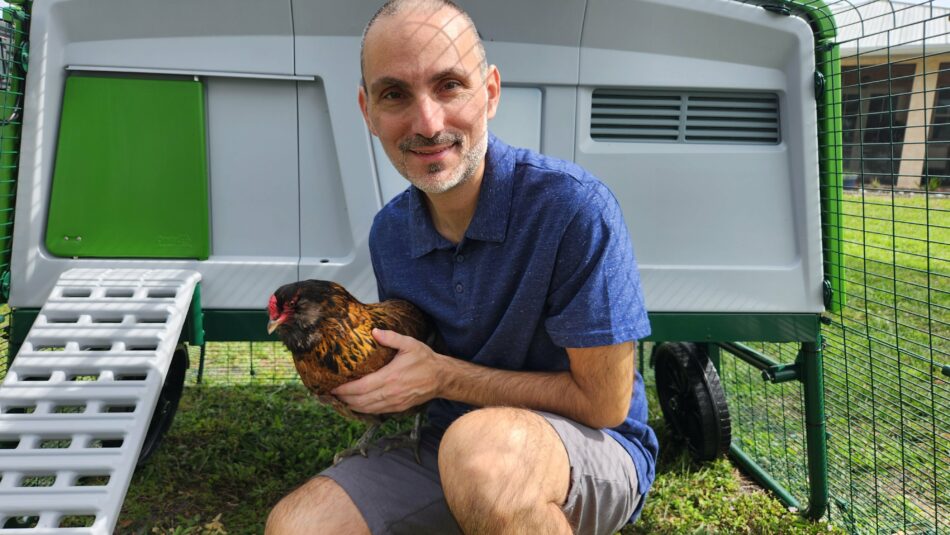
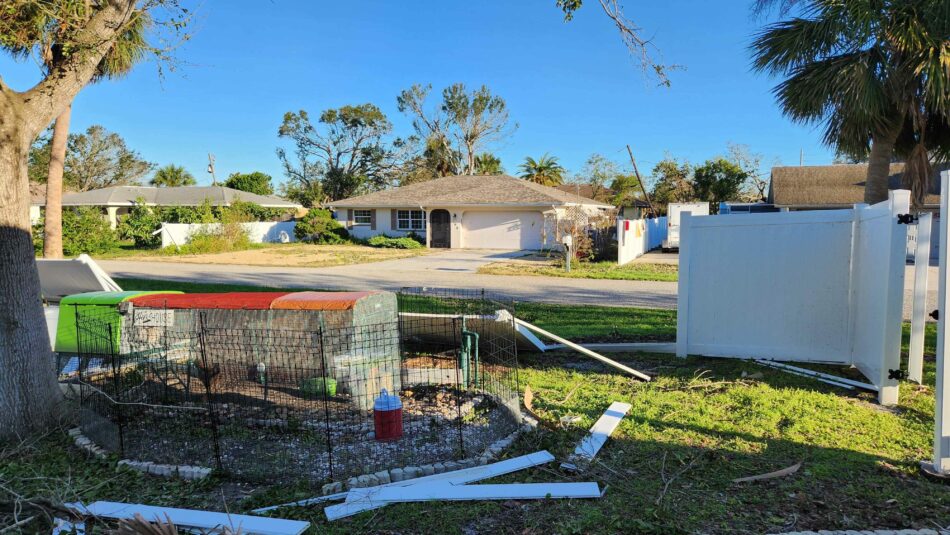
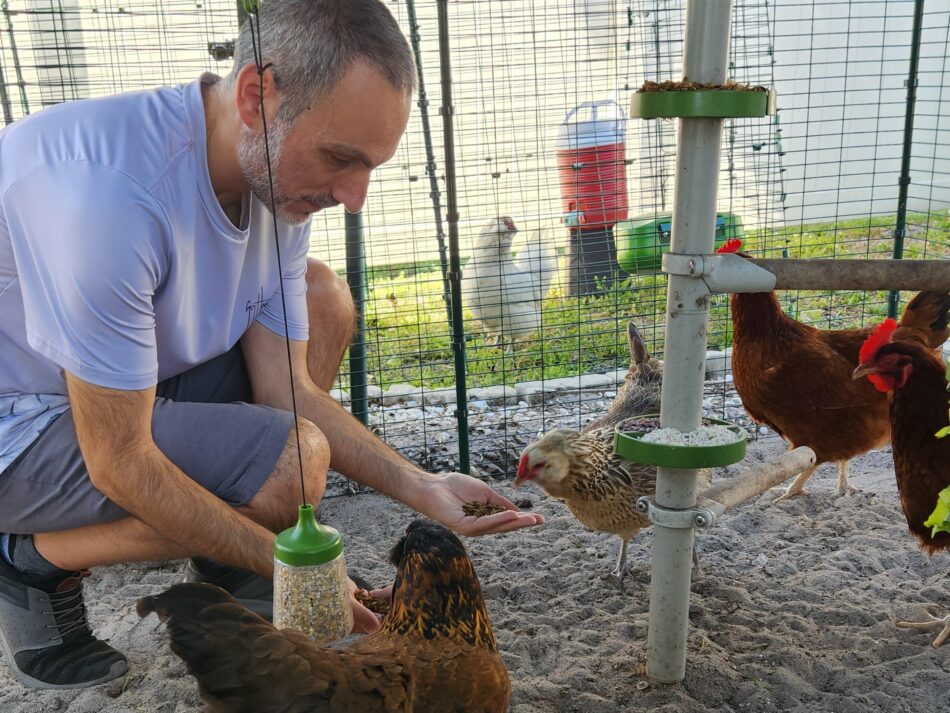
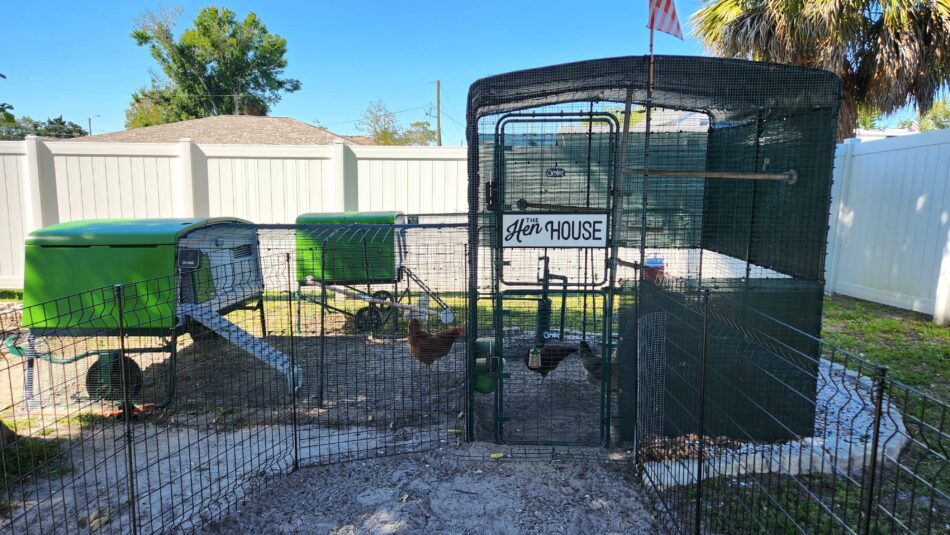
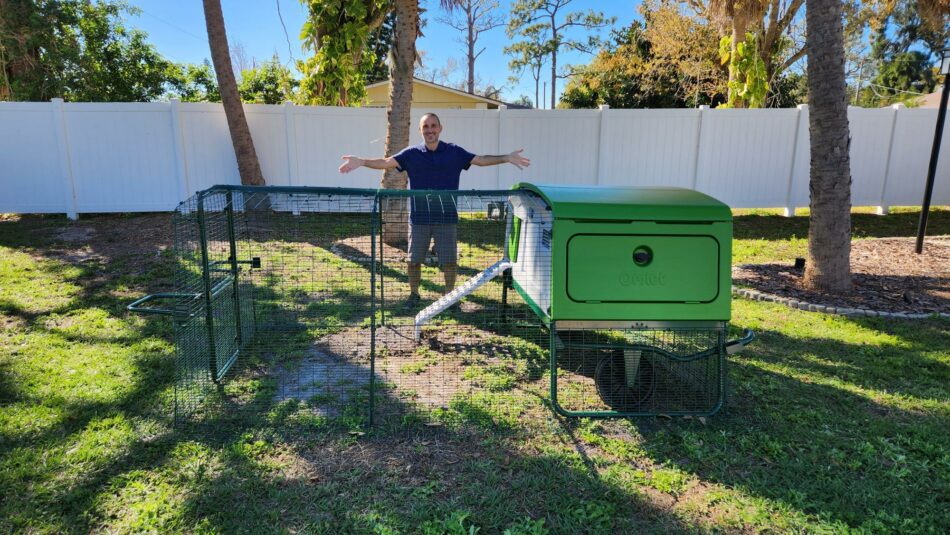

One reply on “Omlet meets: Jeremy, engineer turned chicken enthusiast”
Good to be able to read a detailed article on how someone is so pleased with the Omlet housing & how they are so positive about it’s quality & design